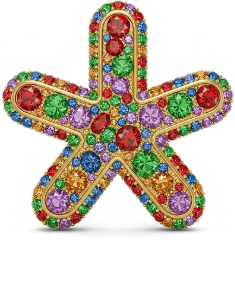Mercurial > code > home > repos > light9
view light9/dmxchanedit.py @ 1064:c5e44bab7c9a
greplin.scales api fix
Ignore-this: b622bd759e9c0011fd427c2c72333d45
| author | Drew Perttula <drewp@bigasterisk.com> |
|---|---|
| date | Mon, 02 Jun 2014 01:21:03 +0000 |
| parents | c1f3cc23b51b |
| children | dc86936969d8 |
line wrap: on
line source
""" widget to show all dmx channel levels and allow editing. levels might not actually match what dmxserver is outputting. proposal for new focus and edit system: - rows can be selected - the chan number or label can be used to select rows. dragging over rows brings all of them into or out of the current selection - numbers drag up and down (like today) - if you drag a number in a selected row, all the selected numbers change - if you start dragging a number in an unselected row, your row becomes the new selection and then the edit works proposal for new attribute system: - we always want to plan some attributes for each light: where to center; what stage to cover; what color gel to apply; whether the light is burned out - we have to stop packing these into the names. Names should be like 'b33' or 'blue3' or just '44'. maybe 'blacklight'. """ from __future__ import nested_scopes,division import Tkinter as tk from rdflib import RDF, Literal import math from decimal import Decimal from light9.namespaces import L9 stdfont = ('Arial', 9) def gradient(lev, low=(80,80,180), high=(255,55,50)): out = [int(l+lev*(h-l)) for h,l in zip(high,low)] col="#%02X%02X%02X" % tuple(out) return col class Onelevel(tk.Frame): """a name/level pair source data is like this: ch:b11-c a :Channel; :output dmx:c54; rdfs:label "b11-c" . and the level is like this: ?editor :currentSub ?sub . ?sub :lightLevel [:channel ?ch; :level ?level] . levels come in with self.setTo and go out by the onLevelChange callback. This object does not use the graph for level values, which I'm doing for what I think is efficiency. Unclear why I didn't use Observable for that API. """ def __init__(self, parent, graph, channelUri, onLevelChange): tk.Frame.__init__(self,parent, height=20) self.graph = graph self.onLevelChange = onLevelChange self.uri = channelUri self.currentLevel = 0 # the level we're displaying, 0..1 # no statement yet self.channelnum = int( self.graph.value(self.uri, L9['output']).rsplit('/c')[-1]) # 3 widgets, left-to-right: # channel number -- will turn yellow when being altered self.num_lab = tk.Label(self, text=str(self.channelnum), width=3, bg='grey40', fg='white', font=stdfont, padx=0, pady=0, bd=0, height=1) self.num_lab.pack(side='left') # text description of channel self.desc_lab=tk.Label(self, width=14, font=stdfont, anchor='w', padx=0, pady=0, bd=0, height=1, bg='black', fg='white') self.graph.addHandler(self.updateLabel) self.desc_lab.pack(side='left') # current level of channel, shows intensity with color self.level_lab = tk.Label(self, width=3, bg='lightBlue', anchor='e', font=stdfont, padx=1, pady=0, bd=0, height=1) self.level_lab.pack(side='left') self.setupmousebindings() def updateLabel(self): self.desc_lab.config(text=self.graph.label(self.uri)) def setupmousebindings(self): def b1down(ev): self.desc_lab.config(bg='cyan') self._start_y=ev.y self._start_lev=self.currentLevel def b1motion(ev): delta=self._start_y-ev.y self.setlevel(max(0, min(1, self._start_lev+delta*.005))) def b1up(ev): self.desc_lab.config(bg='black') def b3up(ev): self.setlevel(0.0) def b3down(ev): self.setlevel(1.0) def b2down(ev): # same thing for now self.setlevel(1.0) # make the buttons work in the child windows for w in self.winfo_children(): for e,func in (('<ButtonPress-1>',b1down), ('<B1-Motion>',b1motion), ('<ButtonRelease-1>',b1up), ('<ButtonPress-2>', b2down), ('<ButtonRelease-3>', b3up), ('<ButtonPress-3>', b3down)): w.bind(e,func) def colorlabel(self): """color the level label based on its own text (which is 0..100)""" txt=self.level_lab['text'] or "0" lev=float(txt)/100 self.level_lab.config(bg=gradient(lev)) def setlevel(self, newlev): """UI received a level change, which we put in the graph""" self.onLevelChange(self.uri, newlev) def setTo(self, newLevel): """levelbox saw a change in the graph""" self.currentLevel = min(1, max(0, newLevel)) newLevel = "%d" % (self.currentLevel * 100) olddisplay=self.level_lab.cget('text') if newLevel != olddisplay: self.level_lab.config(text=newLevel) self.colorlabel() class Levelbox(tk.Frame): """ this also watches all the levels in the sub and sets the boxes when they change """ def __init__(self, parent, graph, currentSub): """ currentSub is an Observable(PersistentSubmaster) """ tk.Frame.__init__(self,parent) self.currentSub = currentSub self.graph = graph graph.addHandler(self.updateChannels) self.currentSub.subscribe(lambda _: graph.addHandler(self.updateLevelValues)) def updateChannels(self): """(re)make Onelevel boxes for the defined channels""" [ch.destroy() for ch in self.winfo_children()] self.levelFromUri = {} # channel : OneLevel chans = list(self.graph.subjects(RDF.type, L9.Channel)) chans.sort(key=lambda c: int(self.graph.value(c, L9.output).rsplit('/c')[-1])) cols = 2 rows = int(math.ceil(len(chans) / cols)) def make_frame(parent): f = tk.Frame(parent, bd=0, bg='black') f.pack(side='left') return f columnFrames = [make_frame(self) for x in range(cols)] for i, channel in enumerate(chans): # sort? # frame for this channel f = Onelevel(columnFrames[i // rows], self.graph, channel, self.onLevelChange) self.levelFromUri[channel] = f f.pack(side='top') def updateLevelValues(self): """set UI level from graph""" submaster = self.currentSub() if submaster is None: return sub = submaster.uri if sub is None: raise ValueError("currentSub is %r" % submaster) remaining = set(self.levelFromUri.keys()) for ll in self.graph.objects(sub, L9['lightLevel']): chan = self.graph.value(ll, L9['channel']) lev = self.graph.value(ll, L9['level']).toPython() if isinstance(lev, Decimal): lev = float(lev) assert isinstance(lev, (int, long, float)), repr(lev) self.levelFromUri[chan].setTo(lev) remaining.remove(chan) for channel in remaining: self.levelFromUri[channel].setTo(0) def onLevelChange(self, chan, newLevel): """UI received a change which we put in the graph""" if self.currentSub() is None: raise ValueError("no currentSub in Levelbox") self.currentSub().editLevel(chan, newLevel)
